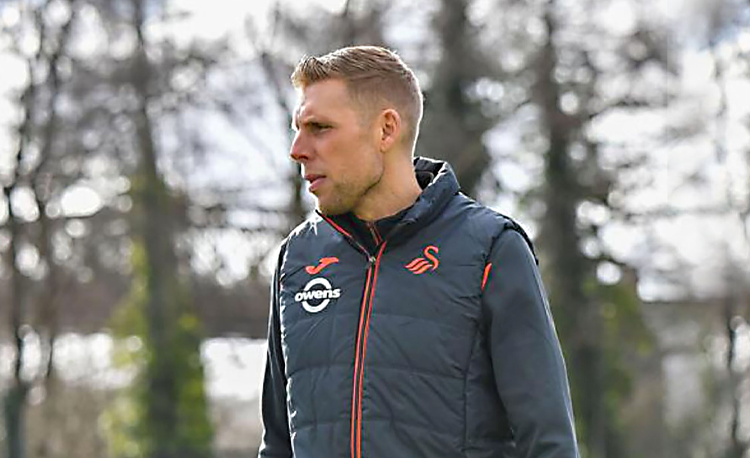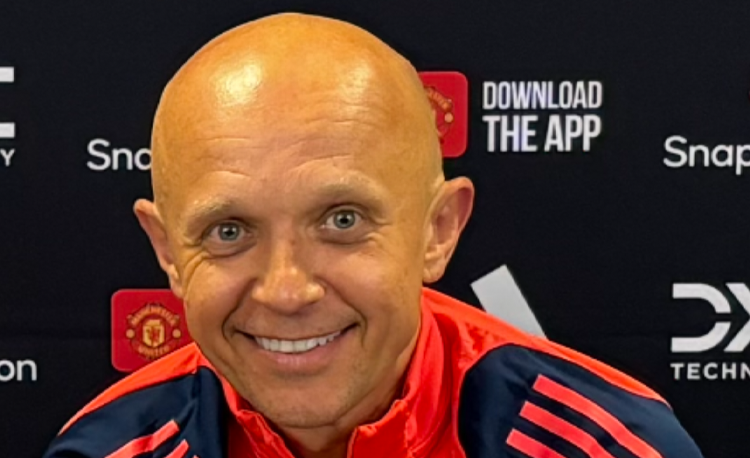Shooting from outside the box
A shooting session that really gets played in the mood to attack. It’s sometimes assumed that ‘distance’ attacking practices such as this one are just about getting laces behind the ball, but good technique is crucial, particularly with players getting their head over the ball.
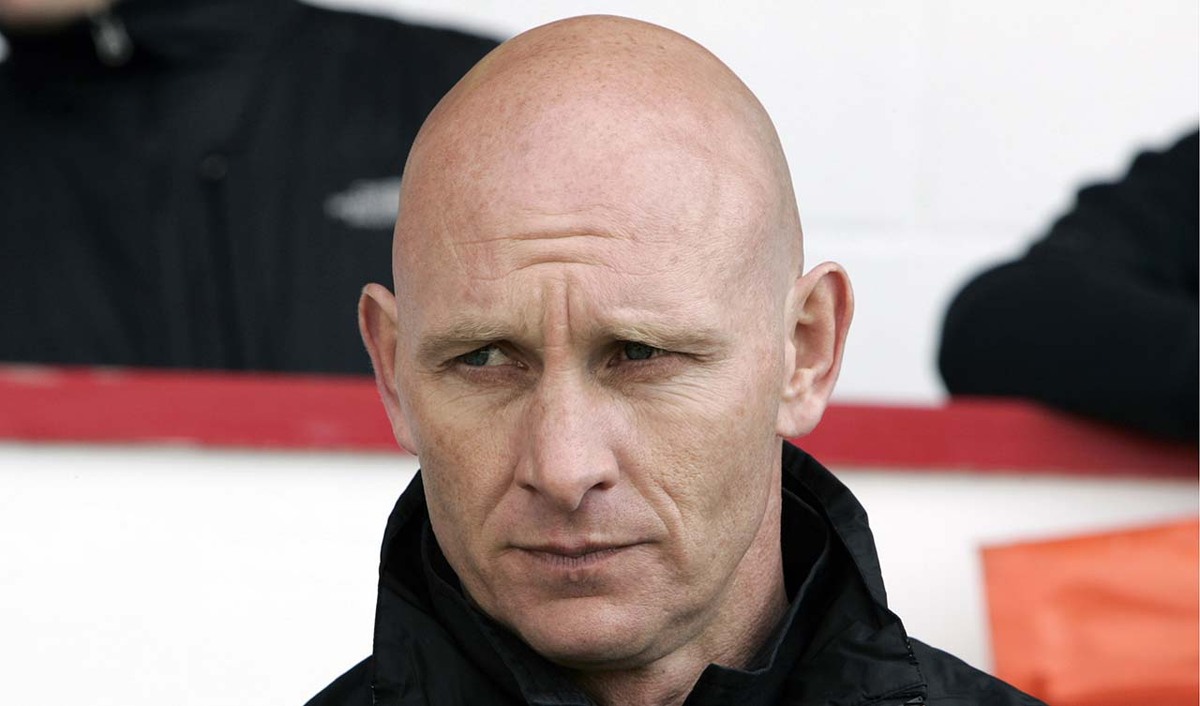
| Area | Final third |
| Equipment | Balls, cones, goals, mannequins (optional) |
| No. of Players | Up to 12 |
| Session Time | 20mins per drill, including progressions |
This is an exciting shooting session that really gets played in the mood to attack. It’s sometimes assumed that ‘distance’ attacking practices such as this one are just about getting laces behind the ball, but good technique is crucial, particularly with players getting their head over the ball. With that in mind, we say that accuracy comes first, then power.
It sounds simple, but rehearsing attacking sessions is the best and simplest way to build confidence for match situations when players work themselves opportunities to shoot.
What do I get the players to do?
Receive and shoot
We set up by placing two poles five yards outside the penalty area, as shown (1a). The practice uses between six and 12 players, and we require a constant supply of balls as the tempo is high.
In the first practice, an attacker is fed a pass by his diagonally opposite man behind the goal. He takes a touch, which moves him inside the pole, then shoots right-footed. His aim should be to hit the near or far post areas, so accuracy before power (we don’t want players to blast it and hope for the best), and the shot must be taken from outside the box.
The two players now swap roles.
1a
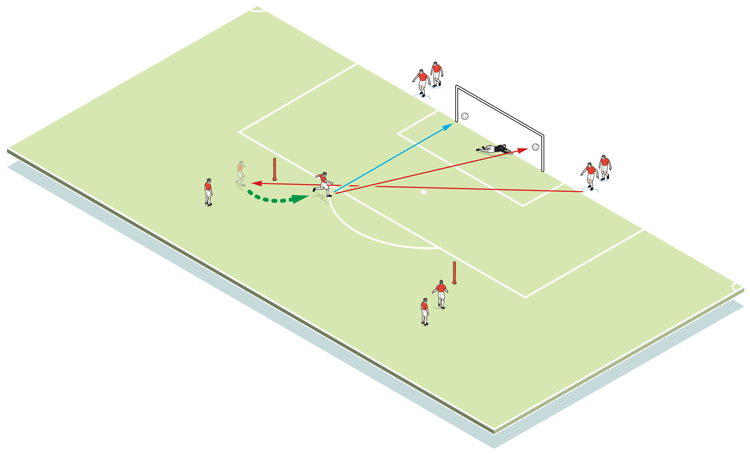
Next, a pass comes in from the player on the other side of the goal (1b). Again, the attacker must come inside the pole, and now it’s a left-footed shot. Again, players change places.
1b
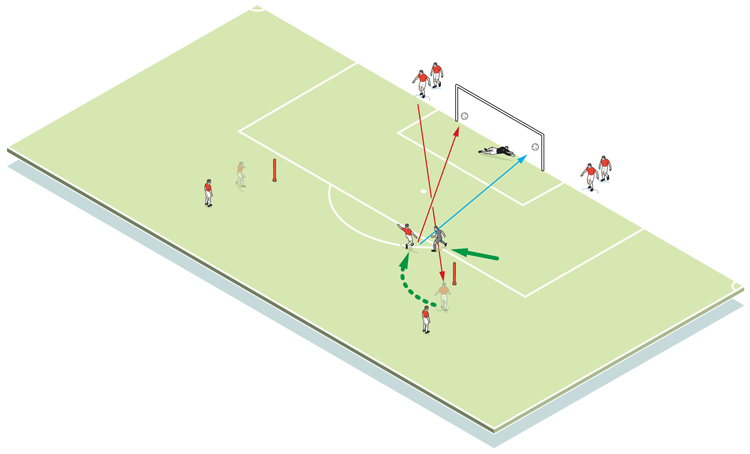
Turn and shoot
Now we use mannequins, positioned further out from the goal. The server plays in to his team mate, who turns on the mannequin using the outside of his foot, takes the ball forward, then shoots left-footed (2). Once that shot is away, players reset, and the next attack begins from the other side of the pitch.
Players should alternate which foot they use for shooting on each phase.
2

How do I progress this game?
There are a number of progressions that can be used to gradually build skill, intensity and urgency. Adding a defender to any of the drills is a great way of making the practice more game realistic, with the centre-forward getting used to being marked and potentially moved around (3).
3
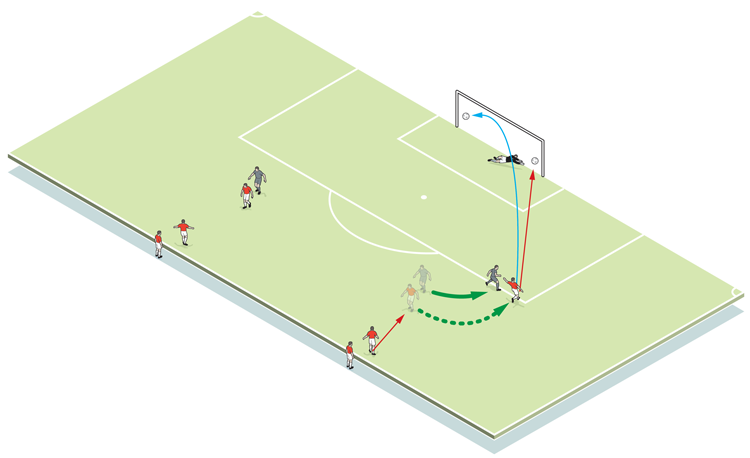
We can also develop interplay between attackers, restrict touches and permit ‘following in’ for rebound opportunities should the keeper save the initial shot.
We might also consider allowing the two attackers to link up together against the lone defender, but the final shot must always be from outside the box.
What are the key things to look for technically/tactically?
Centre-forwards must look to get the first touch ‘out of their feet’ to ensure the second touch is a shot. Technique is vital and will come with good instruction and good practice, as will the confidence to aim for the corners of the goal.
Editor's Picks
Attacking transitions
Deep runs in the final third
Using the goalkeeper in build-up play
Intensive boxes drill with goals
Penetrating the final third
Creating and finishing
My philosophy
Pressing initiation
Compact team movement
Coaches' Testimonials

Alan Pardew

Arsène Wenger

Brendan Rodgers

Carlos Carvalhal

José Mourinho

Jürgen Klopp

Pep Guardiola

Roy Hodgson

Sir Alex Ferguson

Steven Gerrard
Coaches' Testimonials

Gerald Kearney, Downtown Las Vegas Soccer Club

Paul Butler, Florida, USA

Rick Shields, Springboro, USA

Tony Green, Pierrefonds Titans, Quebec, Canada
Join the world's leading coaches and managers and discover for yourself one of the best kept secrets in coaching. No other training tool on the planet is written or read by the calibre of names you’ll find in Elite Soccer.
In a recent survey 92% of subscribers said Elite Soccer makes them more confident, 89% said it makes them a more effective coach and 91% said it makes them more inspired.
Get Monthly Inspiration
All the latest techniques and approaches
Since 2010 Elite Soccer has given subscribers exclusive insight into the training ground practices of the world’s best coaches. Published in partnership with the League Managers Association we have unparalleled access to the leading lights in the English leagues, as well as a host of international managers.
Elite Soccer exclusively features sessions written by the coaches themselves. There are no observed sessions and no sessions “in the style of”, just first-hand advice delivered direct to you from the coach.






